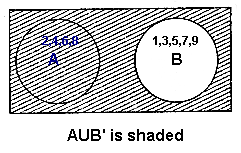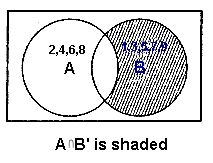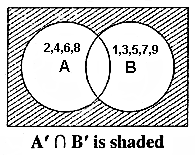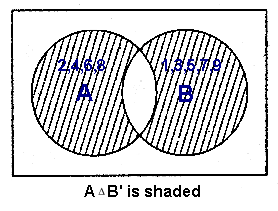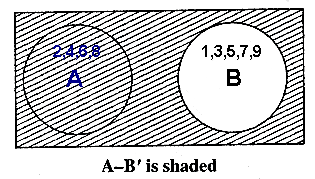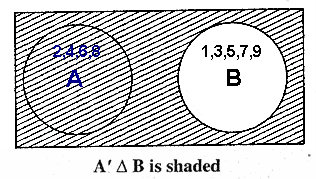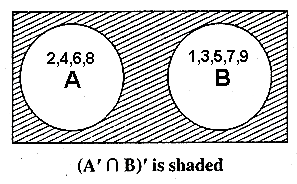GO TO INDEX
The Last Sermon Of Holy Prophet (P.B.U.H)
Questions And Answers
Q.1: When and where was our Prophet (P.B.U.H) born? What tribe /family did he belong to?
Ans: Our beloved Prophet Muhammad (صلى الله عليه وسلم) was born in 571 A.D. in Makkah, Saudi Arabia. Some historian say that he was born in 570 A.D. He belonged to the noble family of Quraish.
Q.2: What did the Quraish worship or believe in? What did the Holy Prophet (صلى الله عليه وسلم) ask / say to them?
Ans: The Quraish used to worship idols and did not believe in one God. The Holy Prophet (صلى الله عليه وسلم) asked the Quraish not to worship their false gods. He told them that he was the Prophet of Allah and asked them to accept Islam and to worship the One and only true God.
Q. 3: What was the reaction of the Quraish to the Holy Prophet's (صلى الله عليه وسلم) preaching? Why did the Quraish oppose them?
Ans: They opposed this new faith, and most of them refused to accept Islam. They thought that he was against their gods and their ancestors. They wanted to go on worshiping idols and did not believe in one God.
OR
Q.3: How did the Quraish treat the Holy Prophet?Ans: The Quraish thought that the Holy Prophet (Peace be upon him) was against their gods and their ancestors. They wanted to go on worshiping idols and did not believe in one God. So they opposed this new faith, and most of them refused to accept Islam.
Q.4(a): Why did the Holy Prophet (صلى الله عليه وسلم) ask the believers to migrate to Madina?
Ans: Most of the people of Makkah refused to accept Islam. They opposed this new faith so much that the Holy Prophet (صلى الله عليه وسلم) had to ask the believers to migrate to Yathribs, a city 320 km (200 miles) north of Makkah, as they were in great trouble and agony in Makkah.
Q.4(b): Why did Prophet Mohammad (peace be upon him) migrate to Medina?
Ans: With time, as many people started accepting his message and converting to Islam, the Quraish became more aggressive and started making attempts on his life. Hence, when Prophet Muhammad (صلى الله عليه وسلم) got positive signals from Yathrib, he also decided to emigrate there.
Q.5: What is meant by Hijra? Where did it take place?
Ans: Hijra means to migrate to a safer place for the safety of life and faith. The bitter opposition or Quraish and their aggresiveness caused the Holy Prophet (صلى الله عليه وسلم) to migrate to Yathrib (Madina), a city 320 km (200 miles) north of Makkah. He (صلى الله عليه وسلم) left Makkah and stopped at a place called Quba, he (صلى الله عليه وسلم) built mosque there on 28th June 622 A.D. and then On 2nd July, 622 A.D. entered Yathrib. This event is known in history as hijra. It marks the beginning of the Islamic calendar.
Q.6: At the time of arrival of Prophet Muhammad (صلى الله عليه وسلم) in Madina, which groups of people used to live there?
Ans: At the time of arrival of Prophet Muhammad (صلى الله عليه وسلم) in Madina, the city had four broad groups of people.
- There were the Muslims; including those who were from Madina and those who had emigrated from Makkah.
- Then, there were the hypocrites; that is those who embraced Islam in name only, but actually were against it.
- Additionally, there were the people from Aws and Khazraj tribes, who were still pagans but were likely to accept Islam.
- Finally, there were Jews, who were huge in number and formed an important community there.
Q.7: To ensure that people of Madina live in peace, what did the Holy Prophet (صلى الله عليه وسلم) do for that?
Ans: In order to ensure that all groups of people in Madina lived peacefully with each other, Prophet Muhammad (صلى الله عليه وسلم) invited the leading personalities of all the communities to discuss that matter. He wanted the different groups to reach a formal agreement for harmony among the communities and for the security of the city of Madina. He succeeded in drawing up the Constitution of Madina, also known as the Charter of Madina, through which a kind of understanding was developed among all the communities living in Madina.
Q.8: What were mentioned in the Charter of Madina? OR What are the three main points of Charter of Madina?
Ans: The three main points of the Charter of Madina were :
- It was mentioned the rights and duties of the Muslims and the Jews of Madina, gave freedom of religion.
- And prohibited any alliance with the outside enemies.
- It also declared that any dispute would referred to Prophet Muhammad (صلى الله عليه وسلم) for settlement.
Q.9: What steps did the Holy Prophet (صلى الله عليه وسلم) take to consolidate the Muslim community in Madina?
Ans: First of all, in order to establish an atmosphere of peace in Madina, he succeeded in drawing up the Constitution of Madina, also known as the Charter of Madina, between all the groups of Madina, through which a kind of understanding was developed among all the communities living in Madina. In later years, he unified the different Arab tribes under Islam, carried out social and religious reforms, and administrative developments that further consolidated the Islamic community in Madina.
Q.10: When did the Holy Prophet (صلى الله عليه وسلم) undertake his farewell pilgrimage to Makkah? What is its significance?
Ans: In the year 10 A.H., Prophet Muhammad (صلى الله عليه وسلم) undertook his farewell pilgrimage to Makkah This farewell pilgrimage is one of the most significant historical events for the Muslims, for it was the first and last pilgrimage made by Prophet Muhammad (صلى الله عليه وسلم), as well as an occasion when he taught Muslims how to perform Hajj.
Q.11: When and where did the Holy Prophet (صلى الله عليه وسلم) deliver his last (hajj) sermon?
Ans: Prophet Muhammad (صلى الله عليه وسلم) delivered his last (hajj) sermon in the Uranah valley of Mount Arafat, on 9th of Dhu al-Hijjah, 1 A.H. (6th March 632).
Q.12: What are the three points of the last (Hajj) sermon of the Holy Prophet (صلى الله عليه وسلم)?
Ans: The three main points of the last (hajj) sermon of Prophet Muhammad (صلى الله عليه وسلم) are:
- Regard the life and property of every Muslim as a sacred trust.
- The superiority of men is not based on blood and wealth. In the sight of Allah everybody is equal. Only the goodness of a man makes him superior to others. The most righteous is the most honourable.
- All the Muslims are brothers to each other.
Q.13: What did the Holy Prophet (صلى الله عليه وسلم) say about women in your last sermon?
Ans: He said, "It is true that you have certain rights with regards to your women, but they also have rights over you."
Q.14: What makes a man superior to others?
Ans: Only the goodness of a man makes him superior to others. No Arab is superior to a non-Arab. Nor is a white man in any way better than a black man. The claims to greatness founded on blood and wealth are false.
Q.15: What did the Holy Prophet (صلى الله عليه وسلم) say about the Muslims?
Ans: He said that a Muslim is another Muslim's brother. All the Muslims are brothers among themselves. It is due to the fact that all the men are the offspring of Adam. He also said that regard the life, honour and property of every Muslim as a sacred trust.
Q.16: What does the last sermon teach us?
Ans: The last sermon teaches us that:
- None shares the authority and power of God.
- The whole humanity is the offspring of Adam and the most righteous is the most honourable.
- Only the goodness of a man makes him superior to others.
- All the Muslims are brothers to each others.
- Life, honour and property of every Muslim is sacred trust.
- Hurt no one so that no one may hurt you.
- "Beware of Satan, for the safety of your religion. He has lost all hope that he will ever be able to lead you astray in big things, so beware of following him in small things."
Q.18: If the Muslims follow the messages given in the last sermon of the Holy Prophet (صلى الله عليه وسلم), what will be the result?
Ans: The messages conveyed in the last sermon are for all times. If the Muslims follow these messages, the result will be a fair and equitable society, in which there will be honesty and justice, and meritocracy will be the guiding principle.
Q.19: What must we do to be a good Muslim?
Ans: We should do good deeds to be a good Muslim.
(note: The answer of below question is taken from old book)
Q.20: When, Where and On what three principles did the Holy Prophet (peace be upon him) found an Islamic Society?(KHI* Board-Science group 2005, 2009, 2011)
Ans. After migration, the Prophet Muhammad (peace be upon him) founded an Islamic Society in Medina based on the following three principles:
- All power belongs to Allah.
- Mohammad (peace be upon him) is the prophet of God.
- All Muslims are brothers to one another.









